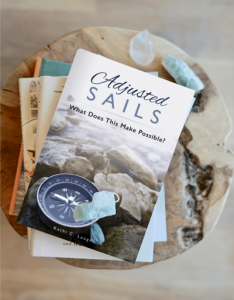
Has this ever happened to you? You had to take a break from something – fully intending to go back to it – but somehow never did. You did not mean to abandon the project, but in the end, that is what happened. If so, you are not alone.
Recently I had to make some decisions about things in my life and work and there were some that I was not ready to just stop. But other priorities had to take precedence so I had to make a choice. Even as I was putting some things on hold, in my heart I knew that for some it was a death knell. I would not be back. Because that is what happens, even perhaps should happen. The issue then might be how we go about the pause.
I have identified three questions to consider when you aren’t certain about the future of something. It could be a project, an investment, a relationship – it is just something that in the priority ranking needs to be temporarily (or permanently) culled out of your life. This dialog is what helps me make decisions with confidence.
#1 – Why am I doing this?
This is the first question to ask ourselves because our reason why we even started is always the critical barometer for our consideration. In some cases, the reason we started something doesn’t exist anymore. That is the real reason it has drifted down the priority list even if we don’t recognize that at first glance. When that is the case, it’s definitely not a pause, it is a stop and we should treat it that way. End it gracefully and generously with compassion for ourselves and anyone else involved.
#2 – Why am I doing this now? Timing is the second factor. Context comes from timing. It is how we see the current importance of things. It may be that something else in our lives is stalled or on some kind of hiatus and it has affected this particular thing as well. When we understand what the relationship is of timing and dependencies, it makes it possible for us to make a decision about when (or if) we will re-visit our decision. It may be a pause for now until we can determine if a later timing changes our perspective and priority. A key distinction is that we actually choose a date (or other condition) to re-consider our choice.
#3 – How can I use this now? Leverage. This is where we have the opportunity to create good from whatever the decision may be. A transfer of value is always a good thing. And knowledge applied is knowledge valued. How much easier to consolidate than to cancel! Yes this was a good use of my time, money and energy and it’s brought me to the point that I now need to do something else. Now I will transfer my results of this and feel good about the investment. It really becomes a continuation vs. a cancel.
Three questions. A good place to begin testing our response to shifting priorities.
When we ask the right questions, the answers that come make the path forward clear. We’re able to make the choices we need to make to keep the right investments of our resources front and center. As we live today like we want tomorrow to be, it’s important to remind ourselves that what we want for tomorrow is also subject to change. Because everything changes as we change. It’s why the word today is so important in that statement. It’s about NOW. It’s about what we want for tomorrow right now so we can live it right now.
Live today like you want tomorrow to be.
Live well.







 Nothing challenges our beliefs like pain.
Nothing challenges our beliefs like pain.

 There is a phrase used sometimes when talking about negotiations that, when you stop and think about it, has a broader application. It speaks to the difference between what someone actually pays and how much they were willing to pay. It’s referred to as the seller perhaps leaving “money on the table” by underpricing or giving in to negotiation pressure. It comes down to how much was possible from the transaction vs. how much was realized.
There is a phrase used sometimes when talking about negotiations that, when you stop and think about it, has a broader application. It speaks to the difference between what someone actually pays and how much they were willing to pay. It’s referred to as the seller perhaps leaving “money on the table” by underpricing or giving in to negotiation pressure. It comes down to how much was possible from the transaction vs. how much was realized.

